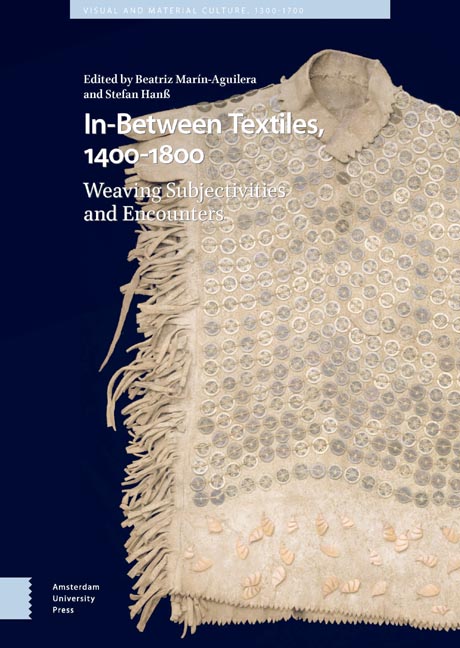Book contents
- Frontmatter
- Dedication
- Miscellaneous Frontmatter
- Table of Contents
- List of Illustrations
- Acknowledgements
- 1 Subjectivities In-Between Early Modern Global Textiles
- Part I Unhomeliness, Mimicry, and Mockery
- Part II The Material Enunciation of Difference
- Part III Identity Effects In-Between the Local and the Global
- Part IV Material Translation and Cultural Appropriation
- Archives, Libraries, and Museums (Abbreviations)
- Select Bibliography
- Index
2 - Maāori Textiles and Culture: Adaptation, Transformation, and Manifestation in Early Aotearoa
Published online by Cambridge University Press: 14 October 2023
- Frontmatter
- Dedication
- Miscellaneous Frontmatter
- Table of Contents
- List of Illustrations
- Acknowledgements
- 1 Subjectivities In-Between Early Modern Global Textiles
- Part I Unhomeliness, Mimicry, and Mockery
- Part II The Material Enunciation of Difference
- Part III Identity Effects In-Between the Local and the Global
- Part IV Material Translation and Cultural Appropriation
- Archives, Libraries, and Museums (Abbreviations)
- Select Bibliography
- Index
Summary
Abstract
Maāori settled Aotearoa New Zealand from East Polynesia in the early-fourteenth century AD. Polynesian people travelled with a “portable economy,” importing domesticate food sources and textile crops. However, this suite of food and textile crops and animals was only partially successful in New Zealand due to the change from a tropical climate with little seasonality, to one that ranged from sub-tropical to sub-arctic zones across two large islands. Māori textiles thus show little resemblance to Pacific textiles, and provide material evidence of pervasive cultural change upon arrival. The migratory experience of Māori settling in Aotearoa created a sense of dislocation from the Pacific homeland, or, as Bhabha puts it, “unhomeliness.” The “in-between” space occupied by Māori on arrival in Aotearoa required the production of new cultural meanings, and textiles, this chapter argues, were a potent vehicle to do so.
Keywords: Maāori textiles; migration; unhomeliness; Critical Indigenous Studies
Introduction
Maāori settled Aotearoa New Zealand from East Polynesia in the early fourteenth century AD. This extraordinary feat of navigation resulted in the final landfall in the exploration of the Pacific by Polynesians, and settlement of the last major landmass uninhabited by humans. As they traversed the Pacific over several thousand years, Polynesian people travelled with a “portable economy” which made settlement of successive islands possible, importing domesticate food sources—animals such as chicken, pig, dog; plants such as breadfruit, coconut, banana, taro, yam, gourd, kumara—and textile crops—Broussonetia papyrifera (paper mulberry), pandanus. However, this suite of food and textile crops and animals was only partially successful in New Zealand due to the change from a tropical climate with little seasonality, to one that ranged from sub-tropical to sub-arctic zones across two large islands. Tapa, arguably the most ubiquitous Polynesian textile form, was only a marginal aspect of dress in Aotearoa, because the plant used to make it, paper mulberry (Broussonetia papyrifera; aute in Māori) did not thrive despite its cultivation. New plant species and modes of textile production necessary for survival had to be discovered and developed with rapidity.
Intuitively it would make sense that the settlers’ new clothes would show clear relationships to Pacific antecedents.
- Type
- Chapter
- Information
- In-Between Textiles, 1400-1800Weaving Subjectivities and Encounters, pp. 57 - 74Publisher: Amsterdam University PressPrint publication year: 2023



